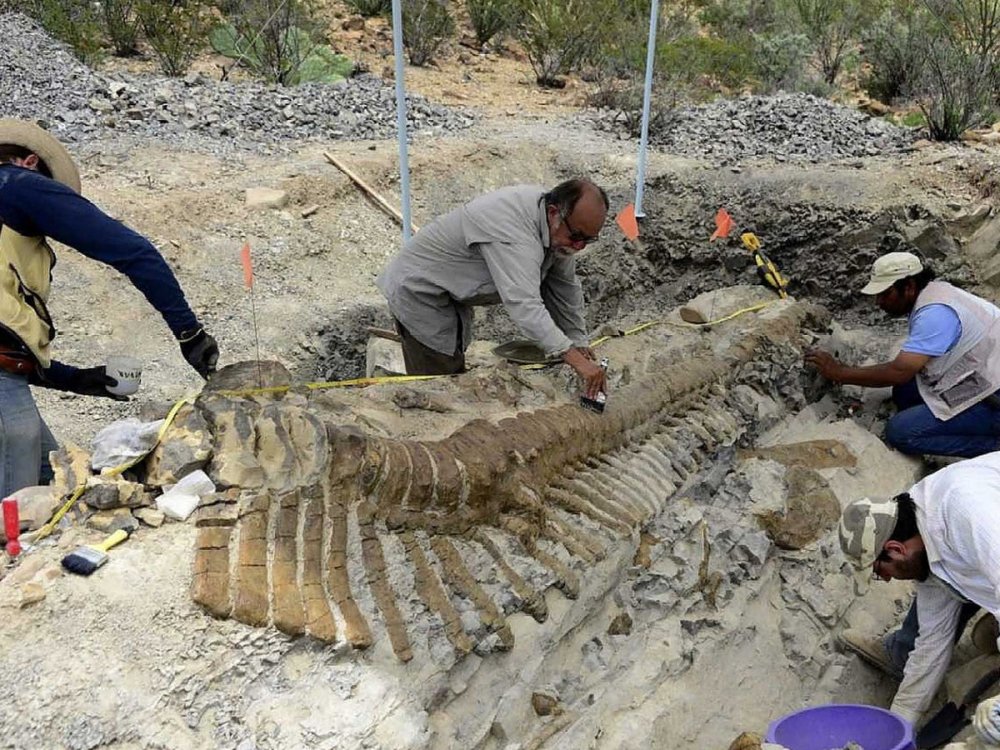
AFP quoted information from Mexico’s National Institute of History and Anthropology (INAH) on May 14, paleontologists have identified a new species of dinosaur after finding specimens from about 73 million years ago in Northern Mexico.
Scientists say the animal’s fossil is almost intact thanks to the sediment layer and climatic conditions around where it lies.
“About 72 or 73 million years ago, a giant herbivorous dinosaur died in a lake full of sediment, its body quickly covered with mud and preserved through the ages.” as reported by INAH.
According to previous information, archaeologists found the animal’s tail for the first time in the General Cepeda area, in the state of Coahuila, northern Mexico in 2013.
The team then continued to excavate and found an additional 80% of the skull with the top of the skull 1.32 m high, along with many other bones such as the femur and shoulder bones of the animal.
With what they found, the team finally announced a new species of dinosaur.
“We know that they had ears with the ability to hear low-frequency sounds, so they must have been peaceful but talkative dinosaurs,” the report states.
In addition, according to paleontologists, the newly discovered dinosaur was also capable of “emitting strong sounds to scare away predators or compete for mates”.
“It’s a special case in paleontology, extremely favorable events happened millions of years ago, when Coahuila was still a tropical region, creating conditions for the skeleton,” INAH said. dinosaurs are preserved in the best conditions.
The animal was named Tlatolophus galorum, with the word “tlahtolli” derived from the vernacular Nahuatl language, meaning “word” or “statement”, and “lophus” in Greek, meaning “crested crest”. “.
INAH describes Tlatolophus’ crest as “a symbol used by the Mesoamericans in ancient manuscripts to represent their own act of communication and knowledge”.





